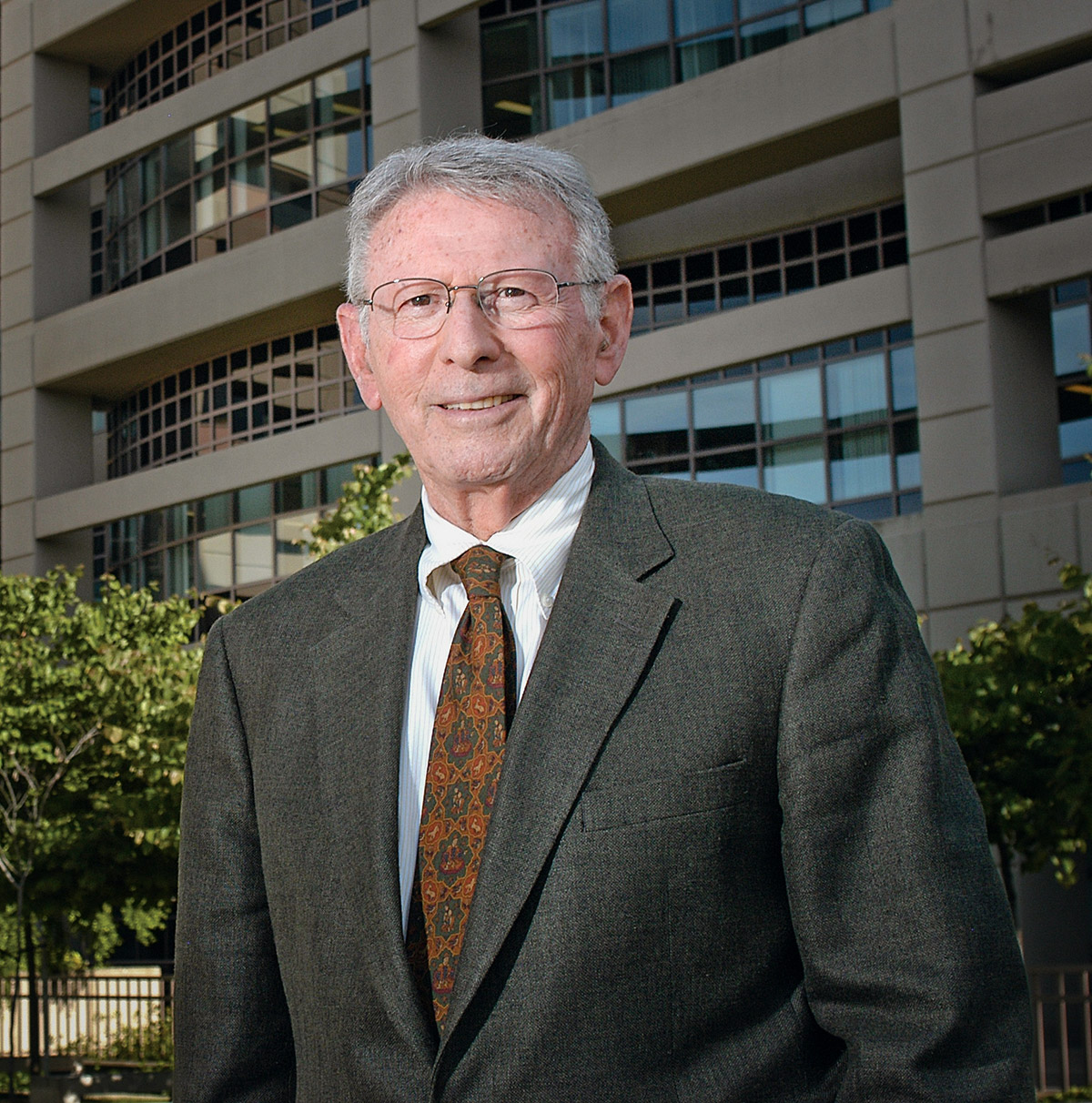connect
Remembering Paul Berg, Nobel Laureate, 1952 Alumnus
Pioneer of recombinant DNA also led efforts to ensure its responsible use

PHOTO: COURTESY OF STANFORD MEDICINEPaul Berg
A senior project entirely altered Paul Berg’s life—and, in turn, benefited millions.
While conducting his undergraduate research, Berg came upon papers that so intrigued him that he decided to pursue his PhD at the place that produced them—the medical school at what’s now Case Western Reserve University.
While he’d intended to work in the pharmaceutical industry, he became “hooked” on academic research while studying with Harland G. Wood, PhD, a renowned scientist and then-director of the School of Medicine’s Department of Biochemistry.
“It changed the course of my career,” wrote Berg, PhD (GRS ’52, biochemistry; HON ’97), in an autobiographical sketch when he received a 1980 Nobel Prize in chemistry. Berg died at his home on the Stanford University campus in February, at 96.
“Our community is deeply saddened by Dr. Berg’s passing,” said J. Alan Diehl, PhD, chair of the Department of Biochemistry at the CWRU School of Medicine. “In addition to his revolutionary contributions to our field, he leaves a remarkable legacy at Case Western Reserve of innovation, collegiality and a pure love for scientific discovery. He will be dearly missed.”
He later honored his mentor by endowing the Paul Berg and Harland Wood Distinguished Graduate Fellowship in 2015 to support CWRU graduate students studying biomedical sciences.
In 1972, Berg published a paper describing an experiment in which he and his Stanford colleagues inserted DNA from one organism into the DNA of another, which became known as gene splicing. Public concern over the technique’s potential to produce biohazards led Berg to spearhead an historic 1975 conference where researchers agreed on federal guidelines for genetic experimentation.
Despite opposition and challenges along the way, Berg’s groundbreaking gene splicing technique became a fundamental tool in biomedical research and drug discovery. In 1980, he and two other colleagues received the Nobel Prize in Chemistry.
Berg remained on the Stanford University faculty for 41 years, serving in many roles, including chair of the medical school’s biochemistry department. He retired in 2000 as the Robert W. and Vivian K. Cahill Professor of Cancer Research Emeritus.
Berg was born in 1926 to Russian Jewish immigrants in Brooklyn, New York. He developed a passion for scientific exploration as a teenager and completed his bachelor’s degree in biochemistry at Pennsylvania State University after serving in the U.S. Navy during World War II.
After a fellowship with the American Cancer Society and time on the faculty at Washington University School of Medicine, Berg moved in 1959 to Palo Alto, California, to help establish the biochemistry department at Stanford.
“I cannot overstate Paul’s brilliance, compassion and enthusiasm for discovery,” Lloyd Minor, MD, dean of Stanford School of Medicine, said in a news release. “The joy of discovery motivated Paul throughout his career, and he generously gave his time to instill that joy in countless many.”





